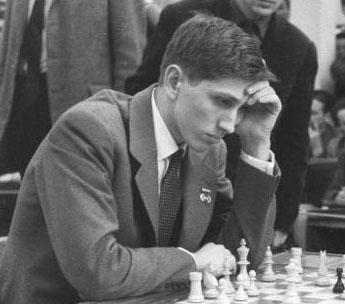
Bobby Fischer's Overlooked Gem
Officially released on September 16, the biographical thriller Pawn Sacrifice is the latest development in an ongoing chess renaissance. Directed by Academy Award-winning producer and filmmaker Edward Zwick, Pawn Sacrifice offers a dramatized look at the life and mind of Bobby Fischer in the tumult surrounding his emblematic 1972 world championship match against Boris Spassky.
To date, the film has met with generally positive critical reception, both from chess players and the public. In a recent New in Chess article titled Finding Bobby Fischer, the GM and renowned economist Kenneth Rogoff calls it "well-researched" and "superbly acted."
Others — such as David Sims in The Atlantic — have pointed out "its refusal to dig deeper into its incredibly compelling subject." Regardless of where one stands on the spectrum, it is hard to deny that Pawn Sacrifice has brought the royal game an unprecedented amount of public interest and attention.
If you haven't already done so, give it a watch!

However, while the political, psychological, and historical underpinnings of the Fischer-Spassky match have been studied from every angle, the games themselves have largely been cast into oblivion. An audacious claim to be sure, and one that must be taken with a grain of salt. Indeed, every game has been analyzed to exhaustion in countless sources of chess literature. Nonetheless, I have the impression that the vast majority of players are more acquainted with the drama surrounding the match than with the match itself.
Until recently, I was a card-carrying member of this group. I knew that Bobby suffered a meltdown in the first game (think 40...Bxh2), and then forfeited the second in a fit of rage. What happened next, though, was shrouded in mystery. Down 0-2 against the reigning world champion, Bobby turned the match around in improbable fashion, winning seven of the next 19 games to become the first American world champion. Bear in mind that Spassky lost a total of four games in the preceding two years.

Studying each and every one of Bobby's victories yields a fascinating and wonderfully instructive peak into the inner workings of a chess legend. In this article, I would like to explore one game in particular that is representative of Bobby's genius: the sixth match-game. We will break the game down into its three phases, and try to come as close as possible to understanding what made Bobby Fischer tick. In doing so, we will unlock a side of the match that has often remained in the dark: the moves themselves.
Opening
The opening has resulted in both an objective and a moral victory for Bobby. Despite his rich Queen's Gambit experience, Spassky has not fully solved his opening problems. His position appears perfectly solid, but he has overlooked a concealed tactical resource that drives a sharp knife through his position.
Middlegame
Six moves. Six. Six moves is all it took for Bobby to turn the game from objectively equal to winning. Now, all that remains is to demonstrate precise technique, a test that Bobby passes with flying colors.
The Attack
"The surprising submissiveness with which Spassky lost suggests to me that in 1972 he and Fischer were already in different chess eras," Kasparov writes.
I could not agree more. Bobby's style was patently anachronistic; his play pullated with a kind of surreal energy, a certain wholesomeness that his contemporaries could not replicate. Though his life and personality were certainly fascinating (and tragic), Bobby should be remembered primarily for the contributions that he made on the chessboard.



